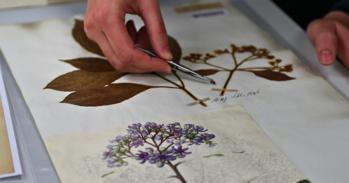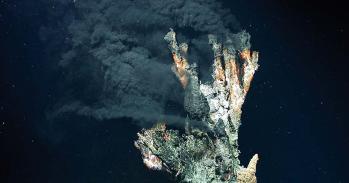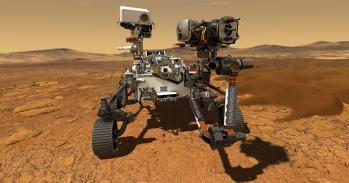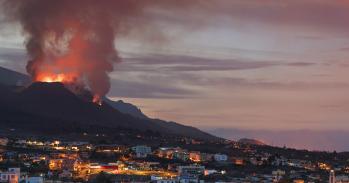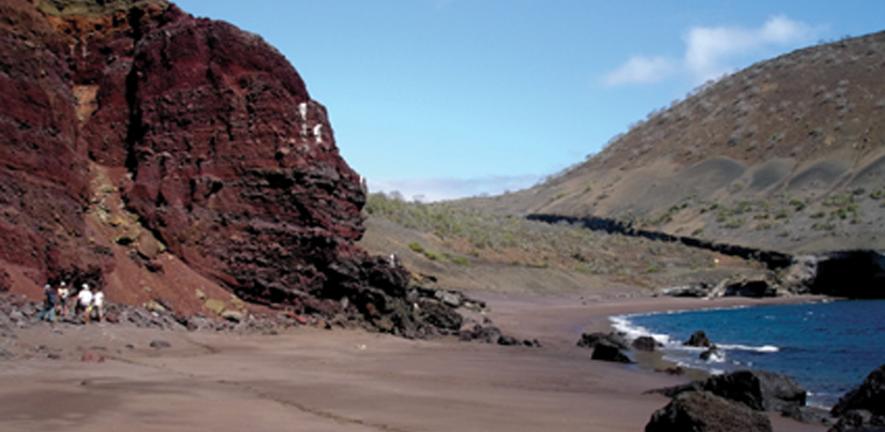
How did a fragment of lava set in motion a journey to the Galapagos 170 years after Darwin’s epic voyage?
How did a fragment of lava set in motion a journey to the Galapagos 170 years after Darwin’s epic voyage?
This would be only the second time the geology of Isla Santiago had been investigated since the 26-year-old Charles Darwin set foot there in 1835.
A dispute over the provenance of some of Charles Darwin’s rock collection, now housed at Cambridge’s Sedgwick Museum of Earth Sciences, led to an expedition to the Galapagos two years ago that in turn has resulted in an entirely new analysis of the geology of the Archipelago. The specimens are part of a collection of some 2500 rocks, minerals and fossils collected by Darwin on his 1831–1836 voyage aboard HMS Beagle.
Journey to the Galapagos
The germ of an idea to re-visit the Galapagos took hold when Dr Sandra Herbert, a visiting scholar from the University of Baltimore, noted a longstanding dispute concerning the provenance of lava rocks labelled by Darwin as ‘trachyte’ collected on James Island (now known as Isla Santiago). According to established understanding of the island’s geology, the rocks could not have come from the island; by implication, either Darwin had mixed them up or the Sedgwick Museum had inadvertently mislabelled the specimens during curation. Perhaps by re-visiting the island, establishing Darwin’s route and collection sites, the matter could be cleared up once and for all?
In 2007, an expedition led by Dr David Norman, from the Department of Earth Sciences and Director of the Sedgwick Museum, arrived at the Charles Darwin Research Station in the Galapagos Archipelago; members of the expedition included Dr Sally Gibson and Andrew Miles from Earth Sciences, Dr Herbert and Dr Dennis Geist (University of Idaho). This would be only the second time the geology of Isla Santiago had been investigated since the 26-year-old Charles Darwin set foot there in 1835.
With funding from the US National Science Foundation, Christ’s College and Trinity College, the team integrated historical research with the collection of new rock samples from individual lava flows that have occurred at intervals across Isla Santiago. Fresh samples of rock were collected, with special permission from the Parque Nacional Galapagos, yielding an entirely new collection of volcanic rocks that reflect different phases of eruptive activity across the island.
The geological history of the island itself is now the subject of further investigation in the laboratory using the new samples. It is already clear from this ongoing research that the island has an unusual history, with volcanic activity still evident in the recent historic past; this alone indicates that the hot mantle ‘plume’ that lies beneath the oceanic plate upon which the Galapagos sit has an unusual shape and dynamic relationship with the islands above.
And the piece of lava?
Almost as we have come to expect, Darwin’s notes were correct (and the Museum curators had not slipped up either!). The rock type that Darwin identified as a ‘trachyte’ was found again (despite proving somewhat elusive) on the flanks of Cerro Pelado, a near-perfect small volcanic crater close to the summit of the island. And indeed all the major locations visited by Darwin yielded rock types that reflected his original collection held in Cambridge.
This information will also enrich the lines of investigation pursued by Dr Lyall Anderson, Isaac Newton Trust Research Fellow at the Department of Earth Sciences. Dr Anderson is taking a fresh look at the collection in the context of Darwin’s early thoughts on geology, using Darwin’s copious geological field notebooks housed at the University Library.
Clearly, as has proved so often to be the case, Charles Darwin chose to land on, and sample from, a particularly interesting place both scenically and biologically, …and geologically.
For more information, please contact the author Dr David Norman (dn102@cam.ac.uk). Dr Norman is Director of the Sedgwick Museum and a palaeontologist in the Department of Earth Sciences.
‘Darwin the Geologist’: exhibition at the Sedgwick Museum
A major new exhibition of the geological specimens collected by Charles Darwin on the voyage of HMS Beagle, and donated to the Museum after his death, will open on 7 July 2009. Charting how Darwin collected, recorded and analysed the specimens and how they were used in his scientific publications, the exhibition will also show how the specimens have been used by subsequent researchers. Darwin the Geologist is funded by the Heritage Lottery Fund.
This work is licensed under a Creative Commons Licence. If you use this content on your site please link back to this page.


